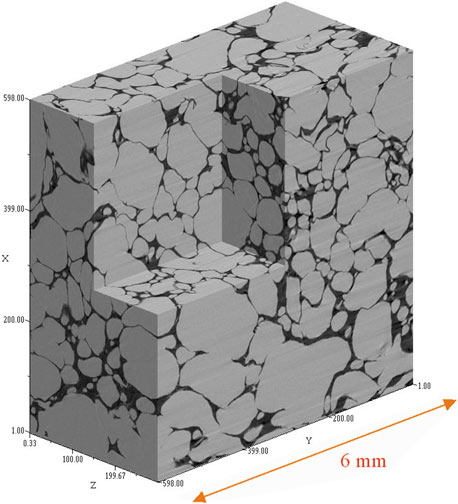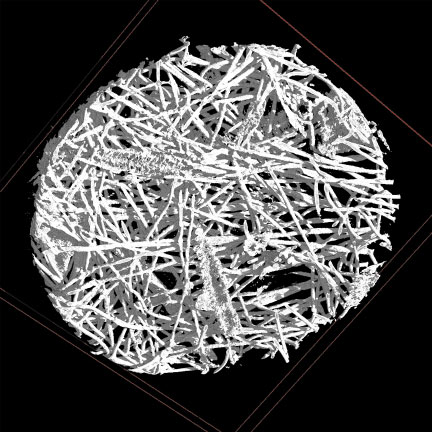- Home
- Users & Science
- Scientific Documentation
- ESRF Highlights
- ESRF Highlights 2002
- Industrial and Applied Research
Industrial and Applied Research
Introduction
The ESRF's effort in industrial and applied research is rewarded by a steady growth of activities in this area. The constantly expanding proprietary research activity in macromolecular crystallography represents the major component of our commercial actions. At a world-wide level the high expectations generated by the progress in genome sequencing and structural genomics initiatives are pushing both large pharmaceutical companies and small start-up enterprises to expand in this field of research. The continuous improvements in automation of the hardware and software tools have led to a steady increase of the beamline throughput. All the Macromolecular Crystallography Group beamlines are involved in industrial research with each beam-line dedicating around 20% of beam-time to this activity.One example of research specifically aimed at identifying new therapeutic treatments is the investigation of the structures of small molecule inhibitors in a complex with Aurora-2, an oncogenic serine threonine kinase. This protein could be a good target for a series of drugs that would disrupt cell cycle and proliferation. It is hoped that information gathered from current investigations will help in the design of inhibitors that can bind more specifically to Aurora-2.
The creation of a centre of excellence in structural biology will boost current research in macromolecular crystallography. Starting in 2003, the Partnership for Structural Biology (PSB) will combine the skills and know-how of the ESRF, the EMBL, the ILL and the IBS to develop an integrated European programme in which they will pool their resources in structural genomics studies focussing on proteins of medical interest. A number of companies have joined this initiative as Associate Partners and will thus benefit from preferred access to facilities at the ESRF.
Pharmaceutical companies also use Synchrotron Radiation for quality control assessment. The powder diffraction beamline (ID31) is routinely used for identifying the different polytypes present in the active compounds.
 |
|
Fig. 111: Tomography of a sandwich loaf. [FreLoN camera 1024*1024 pixels of 10.13 micrometre size]. Courtesy of INRA Nantes GPM2 INPG. |
Transmission microtomography allows three-dimensional imaging of samples with micrometre or submicrometre resolution. Its application spans large fields of applied research. The 3D rendering at 10 micrometre resolution of a sandwich loaf in Figure 111 is a typical example of this activity. The limit of transmission microtomography is the low sensitivity for low Z elements and the low contrast in distinguishing neighbouring elements. This limit can be overcome using the recently-developed technique of phase microtomography. This exploits the spatial coherence of the ESRF beams, allowing a holographic reconstruction of the sample investigated. The image of the felt in Figure 112 has been obtained using this technique. More details and images recorded using phase contrast can be found in the chapter "X-ray Imaging".
 |
|
Fig. 112: Phase reconstruction of a FELT sample. [FreLoN camera 2048*2048 pixels of 1.4 micrometre size]. Courtesy of Fraunhofer Institut. |
These are difficult times for the semiconductor industry. Nevertheless, the TXRF station ID27 has enabled a number of Japanese companies to map the trace element distribution on the surface of silicon wafers with a remarkable sensitivity of 108 atoms/cm2, equivalent to 107 monolayers. This unique facility will remain available for industrial customers, while its long-term future is considered.
The dispersive EXAFS beamline ID24 is the reference installation for time-dependent studies of catalytic reactions. For example, the study of the catalyst CuCl2/![]() -Al2O3 used in the production of 1,2-dichloroethane, a basic ingredient in the production of vinyl chloride is extensively reported in the chapter "Absorption and Magnetic Scattering". The analysis of the XANES spectra of the basic catalyst and of its mixture with KCl has identified the rate-limiting step of the reaction and pinpointed the role of the K-dopant as a moderator of the catalytic process.
-Al2O3 used in the production of 1,2-dichloroethane, a basic ingredient in the production of vinyl chloride is extensively reported in the chapter "Absorption and Magnetic Scattering". The analysis of the XANES spectra of the basic catalyst and of its mixture with KCl has identified the rate-limiting step of the reaction and pinpointed the role of the K-dopant as a moderator of the catalytic process.
While proprietary research is easy to identify, the border between applied and fundamental research appears less clear. We estimate that some 30% of the research proposals considered by the ESRF review committees have significant industrial relevance and involve collaboration between industrial and academic partners.
A new service, the Industrial and Commercial Unit (ICU), has been created within the ESRF Directorate for a better management of industrial and commercial issues. The ICU integrates all the functions needed to enhance industrial relations and the efficiency of the different ESRF services available to industry. The new unit will be the "hub" for all initiatives related to beam time sales, and for all the ancillary services, collaborations, contracts and agreements with academics or industry.
Two examples of applied research follow: the first shows how high-energy X-rays are used to map out the residual stress field in a worn railroad rail, and the second describes how studies of the phase diagram of mixtures can help improve fabric-washing products.



